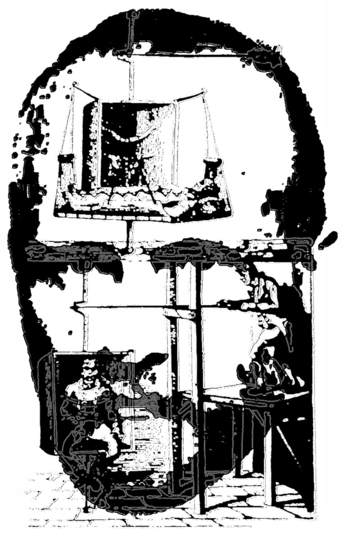Robert Bárány1876–1936
One of the most readily observable consequences of body rotation is slow movement of the eye in one direction and a ballistic return, with this cycle repeated. It is called nystagmus and it is now used as a clinical index of vestibular function. Bárány modified the rotating chair developed by Erasmus Darwin and first constructed by Joseph Mason Cox (1763-1818) and it is now called the Bárány chair. In addition to examining nystagmus following rotation in the chair, Bárány induced spinning sensations by irrigating the ear with warm and cold water. The procedure was known about and had been applied for many years; Friedrich Goltz (1834-1902) referred to it as common knowledge. This is now called caloric stimulation and it is a standard clinical test for vestibular function. Bárány’s experiments using the chair and caloric stimulation were carried out while he was a physician in Vienna, where Breuer and Mach had been active experimenters. The award of the Nobel Prize in 1914 was announced while Bárány was a prisoner of war, although his release was expedited thereafter. On his return to Vienna, Bárány was dismayed by the reaction of his colleagues to the Nobel award; they did not consider that he had given adequate acknowledgements to the researches of those who preceded him. Bárány moved to Uppsala and spent the rest of his academic life in Sweden. His major contribution was to integrate the experiments of Golz, Mach, Breuer and Crum Brown with clinical studies of Prosper Ménière (1799-1862), and he summarised their endeavours with a musical allusion: “Purkinje and Flourens (1825-1828) have devised an ingenious prelude, Ménière (1861) has introduced the first phrase, Goltz (1870) addressed a new theme, and the theory of Mach, Breuer, and Crum Brown concluded the movement, with a powerful, full-bodied accord. The second movement is like a fugue, where many voices whirl around one another, at one time with harmonic combination, and a moment later they are in conflict.” Bárány is shown in an illustration of the rotating chair and bed devised by William Saunders Hallaran (ca. 1765-1825) for treatment of his patients in the Lunatic Asylum of Cork.
